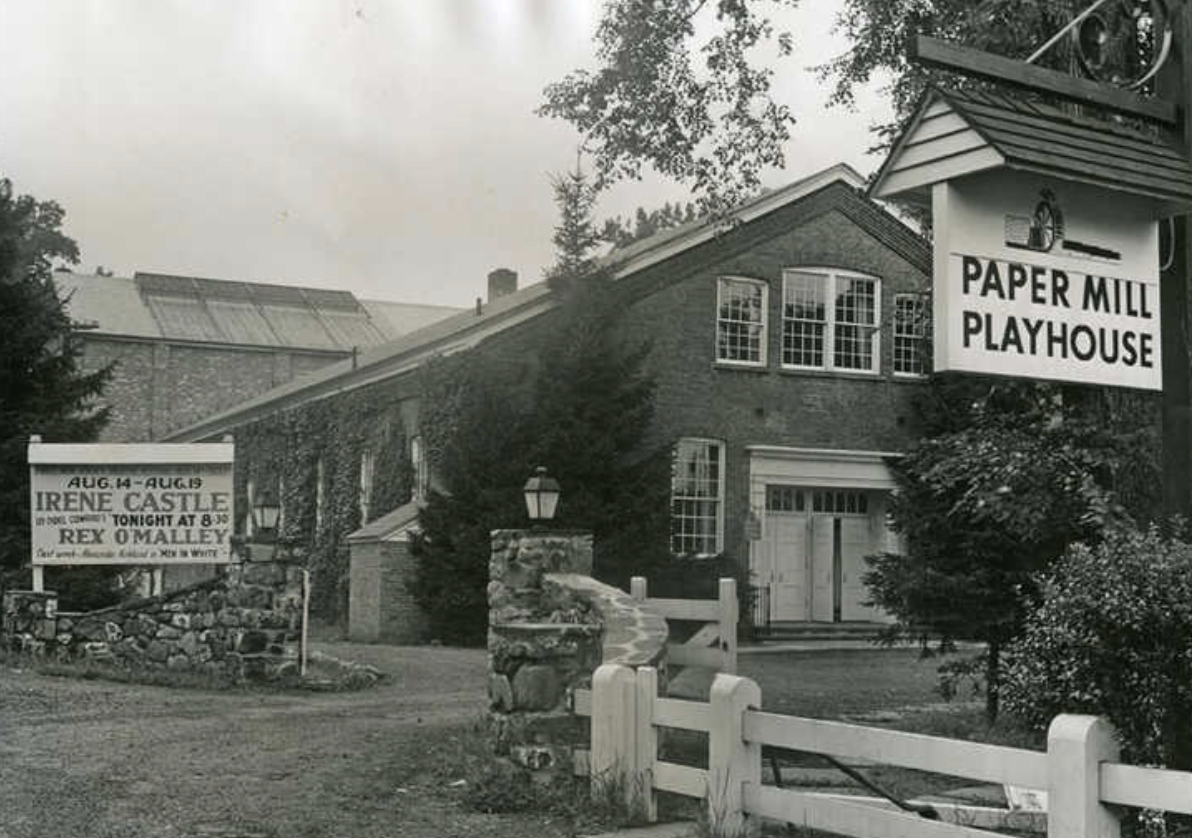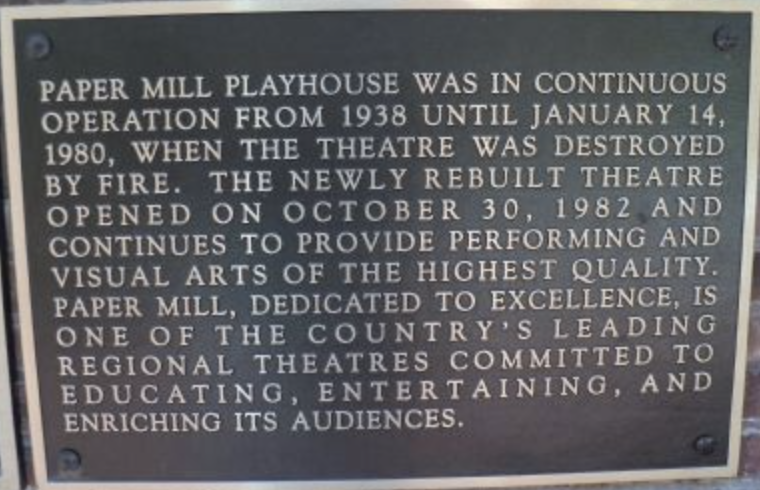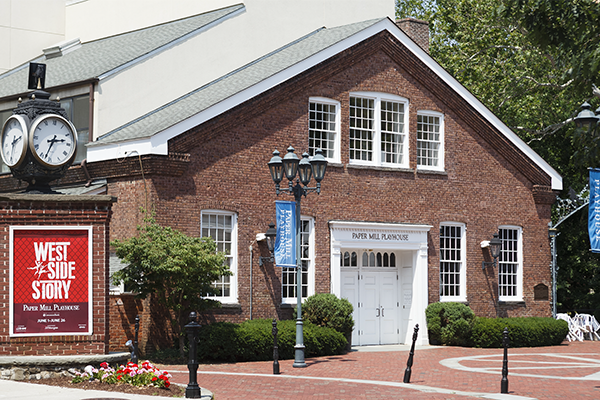
1939 photo from the Historical Society collection
The Millburn Paper Mill Playhouse, a non profit theatre with nearly half a million yearly attendees and one of the largest subscription audiences in the United States, is one of Millburn’s most recognizable landmarks. Essentially, the Paper Mill Playhouse has shaped Millburn since its opening.
As its name suggests, the Playhouse began as the humble Thistle Paper Mill, opened by Samuel Campbell in 1795. After a devastating fire in 1860, the mill struggled for 35 years before finally closing down. In 1934, the building was purchased by Antoinette Scudder, who intended to convert it to a theater. She thought it had a kind of “colonial charm”, and that its proximity to the train line was perfect. The Playhouse opened in 1938, with a performance of the play “The Kingdom of God”. The owners, Scudder and Frank Carrington, held the first New Jersey Theater Festival, and built an acting school for young adults. The Morris-Essex Railroad eventually decided to build a line with trains that would pass by the Playhouse just after the curtains fell each night. By the 1960s, the Paper Mill Playhouse was a thriving hub of acting talent, featuring performers ranging from Betty White to Jane Fonda. Jerry Stiller starred in its production of Prisoner of Second Avenue, and Patrick Swayze starred in The Music Man. In the 70s, then-governor William Cahill declared it the State Theater of New Jersey. After the passing of the original founders, Angelo del Rossi assumed the role of executive producer in 1975. He led the Playhouse in this position for nearly 30 years.

It seemed things couldn’t get better for the Playhouse. Unfortunately, on January 14, 1980, a fire once again torethrough the Paper Mill. Just like it did in 1860, however, it persevered. Pushing through costly rebuilding, the Playhouse eventually managed to be restored to its former glory- yet better. Del Rossi explained, “The moment I saw the fire, I said to myself: ‘We’re going to rebuild for keeps now.’” In 1982, it once again opened its doors, starting with an extravagant gala for longtime supporters and ending with a production of You Can’t Take It With You– whose cast went on to perform it on “Broadway on Showtime”. The new theatre was vastly improved, now with accessible seating, infrared listening systems, and more. Just years later, the theatre was already back to its world-renowned status, ranking second in the nation by the National Endowment for the Arts for artistic excellence, second only to the Metropolitan Opera. PBS nationally aired productions of Showboat, opening up the Paper Mill experience to tens of millions from their own homes.
By the end of the 80s, the Playhouse opened its education program. Since then, it has sported a large theatre school, nurturing hundreds of aspiring actors with alumni like Anne Hathaway and Rob McClure. The Paper Mill began hosting a Tony-style “Rising Star Award”, celebrating high school level stage actors from around New Jersey. Recently, the Paper Mill received the 2016 Regional Tony Award, given to the top regional theatre company in the country.

Shutterstock
The Paper Mill Playhouse has stood in Millburn’s heart for years and years- from its beginnings as a mill over two centuries ago, through fire, conversion to a theater, and fire again, it has prevailed. It remains an iconic symbol of New Jersey and of its hometown, Millburn. It continues to serve an annual audience of half a million and counting today, as well as being the home of education programs and a center of downtown life. Through everything, the Paper Mill Playhouse has always been one of Millburn’s proudest landmarks, and has always brought the community together with the arts, with superb performances for young and old alike.